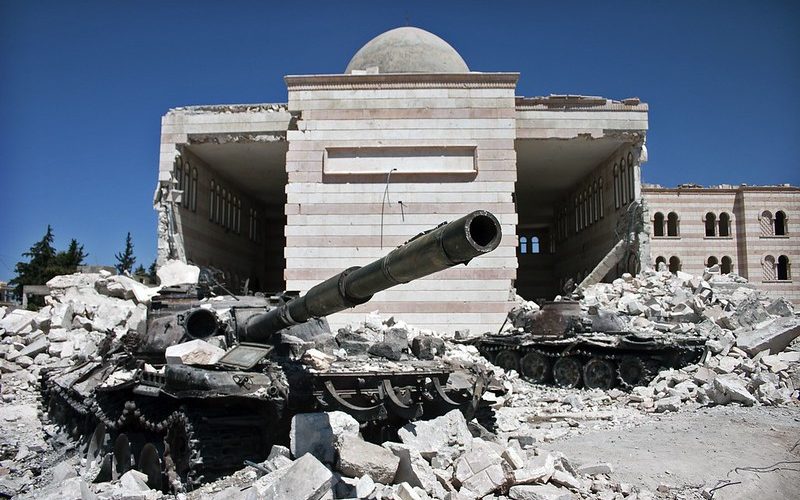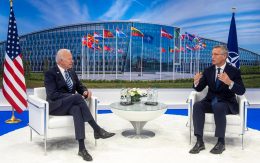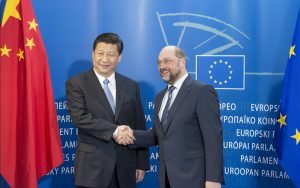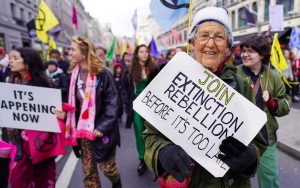Throughout history and to the present, the type of terrain, where and how warfare in the battlespace will be conducted remains a focal point of military thinking. Niccolò Machiavelli, a 16th-century Florentine diplomat writing on terrain, stressed how important it is to “get to know different landscapes, how the mountains rise, and the valleys open out, the lie of the plains, what rivers and marshes are like” (Machiavelli, 2011: 58). The ruler will “get to know his own country and hence have a better sense of how it can be defended” (Machiavelli, 2011: 58). Any such ruler who fails to comprehend each terrain methodically and identify strategies associated with each one will most surely fail to defend his country because “understanding the land helps you find the enemy, lead your army by the right route, choose a place to camp, plan out the battle, and lay siege” (Machiavelli, 2011: 58). Writing on the importance of terrain, Carl Von Clausewitz, Prussian General and military theorist, identifies that, “the faculty of quickly and accurately grasping the topography of any area which enables a man to find his way about at any time” (Clausewitz, 2007: 56).
The purpose of this piece is to identify how the ‘terrain’ of conflict is changing in the 21st century, and furthermore if these new terrains will increase the possibilities for future war. Just as it was important for Machiavelli and Clausewitz to identify and grasp features of the battlefield, it remains especially important for those in the military to continuously think about terrain, and in addition, how it continues to change, so they are prepared for the 21st century. This essay intends to examine the urban terrain specifically because, as the 21st century unfolds, as will be demonstrated, the urban will play an increasingly prominent role. In addition, the debate continues to revolve around the extent to which this new terrain will create the possibilities for future war. For our argument to be fully unpacked, we will analyze both, the ‘pessimistic’ and ‘optimistic’ sides of this debate. Utilising and developing the scholarly literature available to us, we will argue that, based on current trends, the urban terrain, especially within the developing world, will provide possibilities for future war. For the urban space, we will consider, on the one hand, ‘smart cities’ or what we might call ‘smart city governance’, paying close attention to the example of India. Furthermore, we will look at the theoretical underpinnings of conflict resolution strategies within the urban environment. On the other hand, we will consider the ‘rate’ of urbanisation and fragility of the urban space in the developing world, non-state actors operating within megacities, and the ‘microecology of urban violence’ as distinguished by David Kilcullen.
The Urban Space
War in the urban terrain has always played an essential part in our history. Conquerors who dominate history are those who seized the urban environment, to name but a few: Alexander the Great; Julius Caesar; Genghis Khan, Tamerlane; Pizzaro and Napoleon (Stanley, 2003). Now, recent trends show that it will play an even greater one in our future. As scholars of war, we, therefore, cannot afford to ignore the dynamics of conflict, that envelops the urban environment. “One of the most notable global transformations of recent years has been the change from a predominantly rural world to an urban one” (Hills, 2004: 4). In 1997 the world passed the 50% urbanisation mark, making urbanisation a key characteristic of global transformation (Clark, 1996:3). As of 2020, 55% of the world’s population currently lives in an urban environment. This is further expected to increase to 68% by 2050 (United Nations, 2018). Most of the increase (a total of 90%) is taking place in both Asia and Africa, notes a 2018 report by the United Nations (United Nations, 2018). It is consequently, no surprise that “The urban has re-emerged as a crucial level of analysis for understanding conflict in our current world order” (Stanley, 2003). The United States military at present predicts the future of war as: “military operations in urbanised terrain (MOUT)” (Mills, 1997).
One clear example of the relationship between the urban and the possibilities for future war became paramount on September 11th, when the terrorist organisation al-Qaeda flew two commercial jets into the World Trade Centre. Paul Virillo, writing in Pure War notes “the terrorist disequilibrium has erased the theatre of external operations, (battlefields used to be called “theatres of external operations”) – in favour of metropolitan concentrations. The battlefield has clearly become the city” (Virillo & Lotringer, 2008: 10). For the urban pessimist, the tendency of non-state threats to develop within the urban, and more precisely, within a ‘megacity’ (i.e. a city with more than 10 million inhabitants), in the developing world remains a nexus of concern for global insecurity and future conflict: “while it is clear that many large cities in the developed world also grew in a relatively short period, the growth was neither as large nor as dramatic and sustained as where cities have grown – and are continuing to grow – in the developing world” (Williams & Selle, 2019: 12). Furthermore, Williams and Selle both note: “Cities in the developed world generally had the infrastructure and basic amities in place prior to or at least in tandem with the expansion of their populations” (Williams & Selle, 2019: 12). Cities are destination points for criminals and extremists and have long been used as sanctities or bases by non-state actors, (Hills, 2004:15). Thus in addition to this, because of the magnitude and complexity of megacities, in the developing world, and the lack of basic infrastructure in place, and in addition, high rates of socio-economic inequality, (Cockayne et al. 2017) both these factors would further increase and serve as the unfortunate catalyst for the development of irregular threats.
Further on this point, David Kilcullen, writing in Out of the Mountains: The Coming Age of the Urban Guerrilla makes references to what he calls the: ‘microecology or urban violence’ which is crucial to comprehending future trends within the urban. What Kilcullen wants to stress here then is megacities, within developing countries, where rapid population growth has placed the underlying infrastructure of the city under severe stress, does not allow underlying problems common to a metropolis, to be ‘metabolized’, similar to how a biological organism operates, the city subsequently becomes overwhelmed with the build-up of ‘toxic effects’ such as urban poverty, exclusion, disease, unemployment, social injustice, ethnic dislocation, thus further giving rise to, in serve cases, organised conflict (Kilcullen, 2015). Another factor that makes the urban environment even more dangerous than in the past, is how ‘networked’ it is. Technological advancement further complicates operations where non-state threats operate within the urban. In the past, asymmetric warfare between conventional state forces compared to armed non-state groups have generally maintained technological superiority with respect to intelligence collection and processing high-speed communications (Konaev, 2019: 39). However now, “Emerging technologies however, and especially social media platforms such as Facebook, Twitter, and YouTube, have made it harder for states to achieve information superiority and control the information environment during urban military operations” (Konaev, 2019: 40).
One example which demonstrates all these interlinked factors in the urban is the 2008 Mumbai terror attacks, committed by Pakistani terrorist group Lashkar-e-Taiba (LeT). The group exploited the dense urban environment to move without detection on foot and in public transport. They also monitored the attack in real-time and used platforms such as Skype, Twitter, and local satellite news to react to the authorities’ movements and control the attack (Kilcullen, 2015). Moreover, as a result of globalisation, there are enhanced business and funding opportunities to non-state actors operating within the urban (Hills, 2004). In addition, globalisation offers the means to which local threats in a foreign city, can often become global in reach, and consequently in our present interconnected era, to manage transnational threats, is to orient security discussion towards the urban, and the management of threats, which may come in the form of escalation in the form of intervention. Thus, a developing city such as Mumbai becomes just as vulnerable as Paris, London, or New York. Consequently, again given the interconnectedness, and the range of permeable threats which emanate from the urban, in the 21st century, pre-emption is likely to be part of a broad overarching strategy. In the American case, this has been the National Security Strategy (NSS) since September 2002, (Freedman, 2004). The 21st century, in their case, is primarily defined by ‘policing wars’, of which we expect to see more in our future.
Having presented the reasons why the urban terrain presents itself as a serious security threat for the 21st century and therefore increasing the possibility for future war within the international system, contemporary and dominating security thinking exists that prioritizes traditional, state-centric approaches, that would place the urban outside the nexus of security concerns and discussion for the 21st century, rejecting the possibility of future war on this terrain. Here, it is important to mention the realist theory of international relations. The theory itself occupies relevant, upper echelons of contemporary security thinking with its focus on traditional threats and its ignorance of non-traditional threats (Lacy, 2003). Realism, as Mark Lacy argues, alternatively views himself as occupying the rational space ‘outside’ of a ‘beltway foreign policy bureaucracy,’ and who in turn “are the ones with the monopoly on good geopolitical sense. In a condition of global insecurity and uncertainty (Lacy, 2003: 3), yet we maintain the position it would be unrealistic for Realism to ignore these given developments in the urban.
Stephen Walt, a contemporary realist, talks of a ‘new elite’ emerging, with a different view of America’s role (Walt, 2018). Albeit, a Realist may take issue with certain features of American foreign policy, such as geographical areas of strategic concern. Prominent Realists such as John J. Mearsheimer, Stephen Walt, Barry Posen, and Michael Desch were major critics of the Iraq war (Duedney & Ikenberry, 2017). However, as Lacy illustrates, using a quote from John. J. Mearsheimer’s The Tragedy of Great Power Politics: behind closed doors, the elites who make national security policy speak mostly the language of power, and the US acts according to Realist thinking (Mearsheimer, 2003). Consequently, the talk of developing a ‘new elite’ from Walt, fails to understand that the ‘elites’ which Walt openly condemns, operate according to their own realist logic when it comes to disregarding non-traditional security threats (Lacy, 2007), which in the case of our essay, has to pay serious attention, to the urban.
Here we argue, that the non-traditional threat presented by the rapid development of urban terrain in developing nations, (and the non-traditional within such as non-state actors), is indeed in the interests of a national security strategy and could present itself where future military operations are conducted. In relation to the United States, John Amble and John Spencer note that: “to say there are no interests in megacities so vital as to commit military forces to protect them fails to appreciate US role in the world” (Amble & Spencer, 2017). The United States’ interests are global “and, in many regions, their nexus is in megacities. To cordon off areas of the world where we say it is just too hard represents a failure to provide the president with options. The reality is that megacities create conditions that increase the likelihood of future military operations” (Amble & Spencer, 2017).
Adding to this, the United States economy and global connections are reliant on a stable international system, which adds to their global interests in megacities. Urban centres such as Cairo and São Paulo are important cities within the international system: they provide natural resources which exist as ports through which global trade passes (Amble & Spencer, 2017). Furthermore, in the case of the rational choice of a Realist, warfighting in cities may not be the United States’ sole decision to make. It may instead, be out of their control completely, leaving little room for the ‘non-traditional vs traditional’ debate entirely. The west military superiority and technological advances may encourage its adversaries to resort to long drawn out ‘lower level’ conflicts, such as terrorism and guerrilla operations in cities (Hills, 2004). Sun Tzu, a Chinese military theorist advised avoiding the city: “to besiege his citadel is the worst expedient” (Sun Tzu, 2015: 20). Thus for the urban guerrilla, his best method of levelling the battlefield and fighting a war on his own terms is to embed himself within an urban environment. Patrick D. Marques notes that in urban settings, “the guerrilla survives and succeeds by his dependence upon the populace and their support his actions” (Marques, 1990:1).
Moving the debate further, we now turn to a more positive approach for urban terrain in the context of future war. The urban optimist synthesises the promise of the city with technology, consequently, resulting in the concept of smart cities, which integrates technology to control the flow of power and services (Selle & Williams, 2019). In addition to this, we may consider urban planning as an appropriate ‘counter threat’ dimension. A smart city is usually “perceived to present innovative solutions to a multitude of socioeconomic and environmental challenges faced by cities” (Tan & Taeihagh, 2020: 2). A contemporary example of smart city urban planning would be 21st century Paris, with its wide boulevards, avenues and vast open spaces – the product of the consequences of the French Revolution (1789) and the revolutions of 1830 and 1848 (Sina, 2018). The idea was to make it hard for future rebellions in their construction of barricades to stop troops from advancing along roads within the city (Sina, 2018), the classic example of ‘deterrence by denial’. Within the developing world in 2015, India launched the ‘Smart Cities Mission’ which aims to “drive economic growth and improve the quality of the life of people by applying Smart Solutions which will enable cities to use technology, information and data to improve infrastructure and services” (Ministry of Housing and Urban affairs, 2018).
However, even though this is a positive and optimistic development, in the case of India, especially the driving of economic growth is a step in the right direction to alleviate issues within the urban. As Sina notes, the Ministry of Housing and Urban affairs only makes a brief reference to security issues, i.e. that ‘core infrastructural elements’ should include the security of citizens for women children and the elderly (Sina, 2018). This is lacking a fully holistic approach that is needed for India’s urban centres. Thus, given the current trends, as discussed prior, to improve upon its Smart Cities Mission, the Ministry of Housing and Urban affairs should seek to incorporate appropriate (and necessary) counterterror measures that could help mitigate conflict and future attacks, (Sina, 2018). The United Kingdom for example has developed counter-terrorism strategies in both the active and passive domains (Sina, 2018). Sina also notes how the United Kingdom, included within their counter-terrorism dimension is a ‘crowded spaces’ development, which includes traditionally dense places of gathering such as streets, shopping malls, stadiums and cafes (Sina, 2018). For India “progress in this area has been extremely tardy and disjointed, because neither the political establishment nor those responsible for formulating counterterror policies understand the complexities involved (Sina, 2018: 4). Thus, in the case of India specifically, until the Smart Cities Mission goes beyond being just ‘smart’ and adds the necessary steps for implementing fundamental counter-terrorism methods and procedures, it will lack the necessary dimension of being safe as well – a wholly necessary feature for conflict prevention within the urban environment for the 21st century.
Adding on from Sina’s own research, the United Nations Centre for Policy Research, centred around the urban and violence reduction, has developed a vigorous analysis, suggesting that types of interventions targeted where risks ‘intersect’ could be the key to reduce the potential for a violent conflict and war (Cockayne et al 2017). The risks include: governance (such as implementing deterrence by denial), and furthermore, increasing the likelihood of non-state actors having power over populations and market flows as well as demographic stressors, such as ‘youth bulges’ (Cockayne et al 2017) where the state capacity to govern is weak (Cockayne et al 2017). Cockayne et al, stress that the central role should be to focus on identifying those within the urban, competing for governmental power and that we should assist local parties on the ground to find ways to govern.
In addition, they suggest the conflict prevention tool ‘Disarmament, Demobilisation and Reintegration’ (DDR), i.e., paying more attention to realities of urban life, identities, socioeconomics, and culture. Furthermore, just as there are calls to link Non-Governmental Organisations (NGOs) into global conflict resolution processes through the United Nations (UN), city systems should equally be incorporated into a broader strategy, beyond a purely state-centric ontology (Stanley, 2003). Nevertheless, even though this research does shed a more ‘optimistic’ light on dealing with the future of urban terrain and gives us a moment of pause from being wholly fatalistic, when it comes to urban terrain, particularly in developing nations, we allow for the passage of time: theoretical assumptions, to first and foremost develop a workable praxis for policymakers given the emergence of serious war provoking trends stressed throughout, may be needed sooner rather than later.
Conclusion
Within this piece, we have identified a key terrain which, we have argued, will give rise to the possibilities for future war. We provided diverging perspectives, nevertheless, driving the core thesis that there are more grounds, given the rate of current trends, for the argument that the urban will likely create the possibilities for future war. Yet, we gave reasons for a potential optimistic future, given the example of ‘smart city development’ and the ongoing research for conflict prevention within developing countries, in particular from Cockayne et al. Currently, in the case of the former, taking India as a case in point, their smart city project remains ill-equipped to deal with non-state threats. And, in case of the latter, given that state-centric rationality predominates, shifting focus to incorporate conflict management effectively in the urban environment remains an issue of disputation, considering the range of non-traditional threats within the urban such as poverty, disease, unemployment, social justice and ethnic dislocation.
On the more pessimistic side, given the drastic rate of urbanisation as shown by UN figures identified on demographics (especially in developing countries) and owing to the fact that developing countries are more ‘fragile’ as they are not able to ‘metabolize’ severe underlying urban problems as illustrated by Kilcullen. We have also maintained the position that the US as a ‘world leader’ being drawn into a potential war in an urban environment may be inevitable, given how guerrillas operate and may find it adventurous to be within the urban environment. Additionally, given the ‘transnational’ dimension of non-state threats, this could call for a pre-emptive strategy. Lastly, given the role of the US as a ‘world leader,’ the nexus of their interests is often found in megacities around the globe.
Sources Amble. J., Spencer. J, (2017) ‘So you think the army can avoid fighting in megacities’ Modern War Institute May 16th. Available at: [ https://mwi.usma.edu/think-army-can-avoid-fighting-megacities/ ] Accessed: 29/11/2020 Clark. D, (1996) Urban World/Global City, Routledge. Clausewitz. C, (2007) On War, Oxford World Classics. Cockayne, D., Bosetti. L., Hussain. N., (2017) Preventing Violent Urban Conflict A Thematic Paper for the United Nations – World Bank Study on Conflict Prevention, United Nations University Centre for Policy Research Conflict Prevention Series: No. 2. Available at: [ https://collections.unu.edu/eserv/UNU:6432/PreventingViolentUrbanConflict-Aug-2017.pdf ] Accessed: 21/07/2021 Freedman. L, (2004) Deterrence: Themes for the 21st century. Polity Hills. A, (2004) Future War in Cities: Rethinking a Liberal Dilemma Kilcullen. D, (2015) Out of the Mountains: The Coming Age of the Urban Guerrilla, C Hurst & Co Publishers Ltd Konaev. M, (2019) The future of urban warfare in the age of megacities, Defence Research Unit: Focus Strategique. pp. 9-51. Available at: [ https://www.ifri.org/sites/default/files/atoms/files/konaev_urban_warfare_megacities_2019.pdf ] Accessed: 28/06/2021 Lacy, M. (2005) Security and Climate change: international relations and the limits of realism. Routledge Machiavelli. N, (2011) The Prince, Penguin Books Marques. D, (1990) Guerrilla Warfare Tactics in Urban Environments. War College Series Mazarr. J. M, (2018) Understanding Deterrence, Perspective, Available at: [ https://www.rand.org/content/dam/rand/pubs/perspectives/PE200/PE295/RAND_PE295.pdf ] Accessed: 20/06/2021 Mills. S, (1997) Military Operations in Urban Terrain (MOUT) A Future Perspective for a Joint Environment, Naval War College, Available at: [ https://apps.dtic.mil/dtic/tr/fulltext/u2/a326881.pdf ] Accessed: 25/06/2021 Ministry of Housing and Urban Affairs Government of India (2018) ‘What is Smart City’ Available at [ http://smartcities.gov.in/content/innerpage/what-is-smart-city.php ] Accessed: 2/12/2020 Sina. D, (2018) The Counterterror Dimension to the Planning of Smart Cities. Observer Research Foundation, ISSUE NO. 241. Available at: [ https://www.orfonline.org/wp-content/uploads/2018/05/ORF_Issue_Brief_241_Counter_Terror-Smart_Cities.pdf ] Accessed: 25/06/2021, Stanley. B, (2003) City Wars or Cities of Peace: (Re) Integrating the Urban into Conflict Resolution. Available at: [ https://www.lboro.ac.uk/gawc/rb/rb123.html#ft15 ] Accessed: 26/11/2020 Swanstrom. W, (2010) Traditonal and Non Traditonal Security Threats in Central Asia, China and Eurasia Forum Quarterly, Volume 8, No. 2. pp. 35-51 Tan. S., Taeihagh. A, (2020) Smart City Governance in Developing Countries: A Systematic Literature Review. Sustainability 12 – 899 Tzu. S, (2015) The Art of War, Capstone United Nations, (2018) ‘68% of the World population projected to live in urban areas by 2050, says UN’, Department of Economics and Social Affairs, 16th May. Available at [ https://www.un.org/development/desa/en/news/population/2018-revision-of-world-urbanization-prospects.html ] Accessed: 21/07/2021 Virillo. P., Lotringer. S, (2008) Pure War. Routledge Williams. P, Selle. W, (2019) Military Contingencies in Megacities and Sub-Megacities. Strategic Studies Institute








Be First to Comment